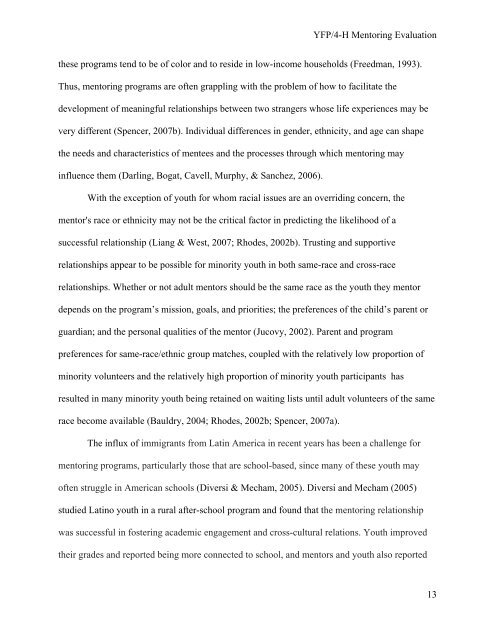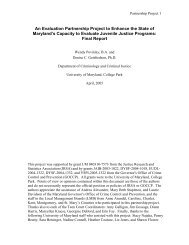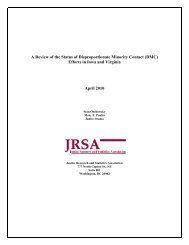A Process and Outcome Evaluation of the 4-H Mentoring/ Youth and ...
A Process and Outcome Evaluation of the 4-H Mentoring/ Youth and ...
A Process and Outcome Evaluation of the 4-H Mentoring/ Youth and ...
Create successful ePaper yourself
Turn your PDF publications into a flip-book with our unique Google optimized e-Paper software.
YFP/4-H <strong>Mentoring</strong> <strong>Evaluation</strong><br />
<strong>the</strong>se programs tend to be <strong>of</strong> color <strong>and</strong> to reside in low-income households (Freedman, 1993).<br />
Thus, mentoring programs are <strong>of</strong>ten grappling with <strong>the</strong> problem <strong>of</strong> how to facilitate <strong>the</strong><br />
development <strong>of</strong> meaningful relationships between two strangers whose life experiences may be<br />
very different (Spencer, 2007b). Individual differences in gender, ethnicity, <strong>and</strong> age can shape<br />
<strong>the</strong> needs <strong>and</strong> characteristics <strong>of</strong> mentees <strong>and</strong> <strong>the</strong> processes through which mentoring may<br />
influence <strong>the</strong>m (Darling, Bogat, Cavell, Murphy, & Sanchez, 2006).<br />
With <strong>the</strong> exception <strong>of</strong> youth for whom racial issues are an overriding concern, <strong>the</strong><br />
mentor's race or ethnicity may not be <strong>the</strong> critical factor in predicting <strong>the</strong> likelihood <strong>of</strong> a<br />
successful relationship (Liang & West, 2007; Rhodes, 2002b). Trusting <strong>and</strong> supportive<br />
relationships appear to be possible for minority youth in both same-race <strong>and</strong> cross-race<br />
relationships. Whe<strong>the</strong>r or not adult mentors should be <strong>the</strong> same race as <strong>the</strong> youth <strong>the</strong>y mentor<br />
depends on <strong>the</strong> program’s mission, goals, <strong>and</strong> priorities; <strong>the</strong> preferences <strong>of</strong> <strong>the</strong> child’s parent or<br />
guardian; <strong>and</strong> <strong>the</strong> personal qualities <strong>of</strong> <strong>the</strong> mentor (Jucovy, 2002). Parent <strong>and</strong> program<br />
preferences for same-race/ethnic group matches, coupled with <strong>the</strong> relatively low proportion <strong>of</strong><br />
minority volunteers <strong>and</strong> <strong>the</strong> relatively high proportion <strong>of</strong> minority youth participants has<br />
resulted in many minority youth being retained on waiting lists until adult volunteers <strong>of</strong> <strong>the</strong> same<br />
race become available (Bauldry, 2004; Rhodes, 2002b; Spencer, 2007a).<br />
The influx <strong>of</strong> immigrants from Latin America in recent years has been a challenge for<br />
mentoring programs, particularly those that are school-based, since many <strong>of</strong> <strong>the</strong>se youth may<br />
<strong>of</strong>ten struggle in American schools (Diversi & Mecham, 2005). Diversi <strong>and</strong> Mecham (2005)<br />
studied Latino youth in a rural after-school program <strong>and</strong> found that <strong>the</strong> mentoring relationship<br />
was successful in fostering academic engagement <strong>and</strong> cross-cultural relations. <strong>Youth</strong> improved<br />
<strong>the</strong>ir grades <strong>and</strong> reported being more connected to school, <strong>and</strong> mentors <strong>and</strong> youth also reported<br />
13
















